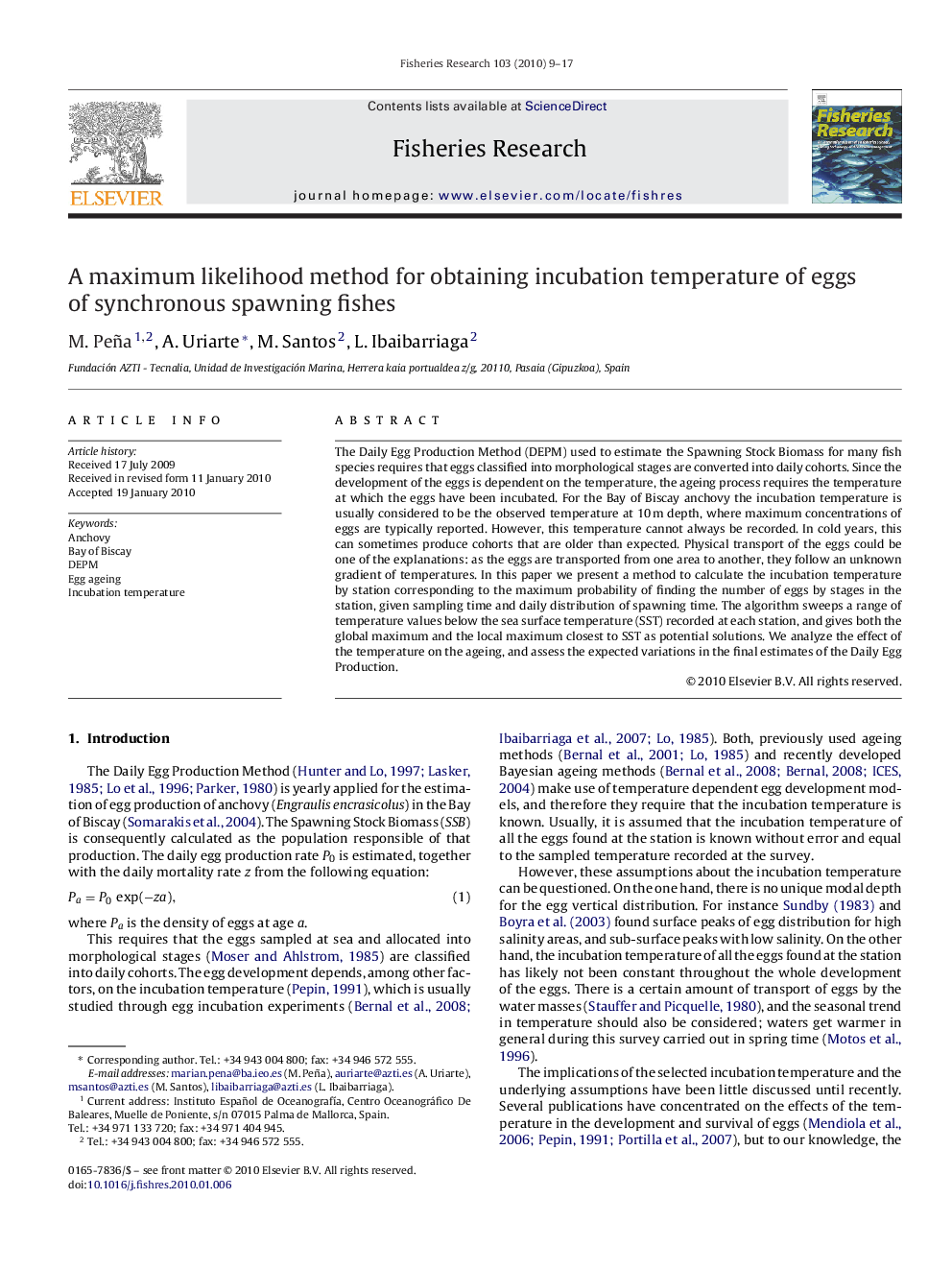| Article ID | Journal | Published Year | Pages | File Type |
|---|---|---|---|---|
| 4543988 | Fisheries Research | 2010 | 9 Pages |
The Daily Egg Production Method (DEPM) used to estimate the Spawning Stock Biomass for many fish species requires that eggs classified into morphological stages are converted into daily cohorts. Since the development of the eggs is dependent on the temperature, the ageing process requires the temperature at which the eggs have been incubated. For the Bay of Biscay anchovy the incubation temperature is usually considered to be the observed temperature at 10 m depth, where maximum concentrations of eggs are typically reported. However, this temperature cannot always be recorded. In cold years, this can sometimes produce cohorts that are older than expected. Physical transport of the eggs could be one of the explanations: as the eggs are transported from one area to another, they follow an unknown gradient of temperatures. In this paper we present a method to calculate the incubation temperature by station corresponding to the maximum probability of finding the number of eggs by stages in the station, given sampling time and daily distribution of spawning time. The algorithm sweeps a range of temperature values below the sea surface temperature (SST) recorded at each station, and gives both the global maximum and the local maximum closest to SST as potential solutions. We analyze the effect of the temperature on the ageing, and assess the expected variations in the final estimates of the Daily Egg Production.
